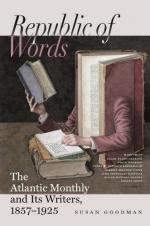The metaphoric ‘Angel’ of enamored swains is at once so trite and obvious, that both the invention and vocabulary of the lover who abides by it so perpetually must have been poor and narrow beyond anything we can conceive of Spenser’s fecundity of language and imagery, if we sit down content to imagine that no more is meant by its recurrence than meets the eye. We are satisfied that this title or simile—call it what you will—is the key-word of the mystery; and we must now look around the neighborhood of the Mulla for a family-surname out of which this “Angel” can be extracted by the “alchemy of wit.”
On consulting the “Great Records of Munster,” Vol. VI., we find a family residing in the neighborhood of Kilcolman Castle whose name and circumstances correspond exactly with all the requirements of our Angel-ic theory. The Nagles were a very ancient and respectable family, whose principal seats were in the northern parts of the County of Cork and the adjoining borders of the County of Waterford. There seem to have been two races of them, distinguished by the color of their hair into the Red Nagles and the Black Nagles; and of the former, the lord or chieftain of the tribe resided at Moneanymmy, an ancient preceptory of the Knights of St. John, beautifully seated on the banks of the Mulla, where it disembogues its tribute into the Blackwater, on its passage to Cappoquin and Youghal, and at a convenient distance from Spenser’s Kilcolman. Elizabeth Nagle belonging to the Red branch of the family, we shall find no difficulty in accounting for her alleged resemblance to Queen Elizabeth.
The proprietor of Moneanymmy, strictly contemporaneous with Spenser, was John Nagle, whose son, David, died in the city of Dublin in 1637. It is therefore but fair to suppose that in 1593 (the year of Spenser’s marriage) this David might have had a sister of marriageable age; for he himself, by his marriage with Ellen Roche of Ballyhowly, had a daughter, Ellen, who in due time was married to Sylvanus, the eldest son of Edmund Spenser. If our supposition be correct, therefore, Ellen and Sylvanus were linked by the double bond of cousinhood and matrimony.
Unfortunately for our Spenserian inquiry, however, the full and regular pedigree of these Nagles commences only with David, whose marriage and the issue thereof are recorded at large in Irish books of heraldry; whereas the preceding generations, to a remote antiquity, are merely notified by the bare names of the son and heir as they succeeded to the inheritance.
John Nagle may have had a daughter marriageable at the time of Spenser’s marriage; and she may have married the poet,—and did, we are convinced,—even though her family belonged to the Romish persuasion, and the bridegroom to the Protestant Church.
To this untoward circumstance—the difference in religion—there is curious reference made in a remarkable passage of the “Amoretti,” which seems not only to indicate the name of her family, but to screen the poet himself from the penalties denounced against Protestants who intermarried with Roman Catholics. In the Sixty-first Sonnet, the lady is said to be:




